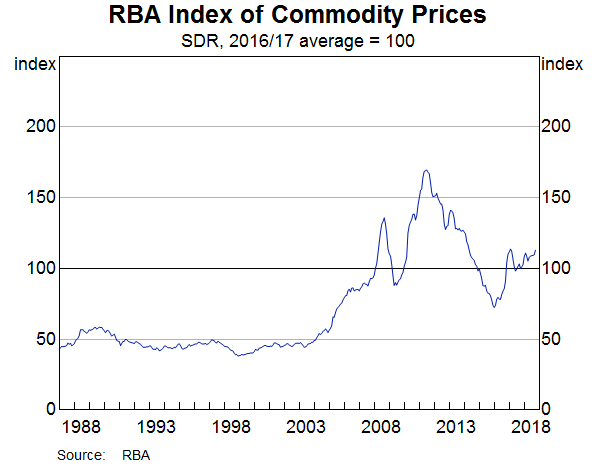Inflation is under control, employment growth remains solid with plenty of jobs to be filled; investment is improving, especially outside resources and only wages growth and household debt remain big concerns, along with weakening house prices.
But export income is surging, as the trade data for September, yesterday confirmed (see separate story).
Thanks to solid prices for iron ore, coal, and LNG, the Reserve Bank’s Commodity price Index – a proxy for our terms of trade – hit a near six-year high in October, the central bank said yesterday.
RBA data showed the index is now at levels last seen in late 2011-early 2012, the dying days of the great China resources boom.

The RBA reported that the index rose 3.7% in October in Australian dollar terms, to be up 22.3% in the past year.
“The non-rural and base metals subindices increased in the month, while the rural index decreased,” the RBA reported. the weaker Australian dollar and higher volumes helped offset weaker prices for copper and metals, while coal and iron ore prices, along with LNG were higher (but not oil).
Over the past year, the index has increased, led by higher LNG, iron ore, coking coal and thermal coal prices, the RBA reported.
The RBA cautioned that the index is computed using preliminary estimates for iron ore, coking coal, thermal coal, and LNG export prices are being used for the most recent months, based on market information.
Separate figures from the Australian Bureau of Statistics yesterday on our export and import indices showed export prices for the September quarter jumped 3.7% while import values climbed 1.9%, pointing to an improvement in our terms of trade of around 1.8% on a preliminary basis.
The September and September quarter update from the Finance Department showed revenues running more than $7 billion ahead of forecast because of the strong jobs growth and the higher profits from resources exports, as well as services.







